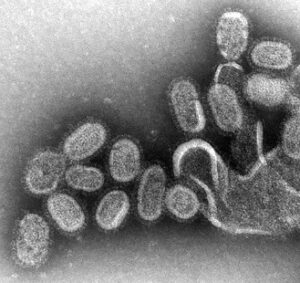
Figure 1: Allergic disorders in humans and dogs are associated with an urban lifestyle, likely due to a lack of microbial exposure
Source: Pixabay
Industrialization has driven many societal advances such as improved healthcare infrastructure; however, it has also switched our once rural living environment to a now urban lifestyle, negatively impacting our health (Lehtimäki et al., 2020). The decline in exposure to nature, specifically to certain microbial communities, presents a threat to not only humans, but also our dogs, in driving up rates of allergic diseases. Allergic disorders are defined as adverse reactions by the immune system to innocuous substances (Ilaria et al., 2016). Such reactions are characterised by disturbed skin and/or gut microbial compositions (microbiota) (Lehtimäki et al., 2018). It has been suggested that the increase in allergic disorders in urban areas is caused by the lack of allergy-protective factors (Majkowska-Wojciechowska et al., 2007). Lehtimäki et al investigated if environment, both lifestyle choices and microbial exposure play a similar role on the risk of developing allergies in both humans and dogs (Lehtimäki et al., 2020).
The study recruited 168 dog-owner pairs and scrutinised samples of skin and faecal microbiota, as well as the living environment (rural versus urban) and lifestyle. By analysing these samples through 16S rRNA sequencing, which identifies bacterial genera (species groups), the researchers found that the shared environmental risk factors in cities correlate with allergic disorders in both humans and dogs, probably due to limited microbial exposure. The results suggested that the skin microbiota of dog-owners and their respective pets resembled each other partially, indicating that the living environment does influence the skin microbiota. However, Lehtimäki et al. did not identify specific bacteria as triggers of allergies in both species, likely due to interspecies distinctness of the skin.
In addition, a particular skin microbial composition could predict if the dog-owner pair lived in a rural or urban area, further signifying the impact of the environment. However, while the study identified that abundance of bacterial species in the microbiota of urban versus rural dwelling pairs varied, the researchers were unable to determine specific microbe differences between the groups. Further investigation is needed to assess the role of specific bacterial species and other environmental factors such as air pollution. Nevertheless, this study corroborates the importance of microbial exposure and the negative impact of urbanization on human as well as dog health (Lehtimäki et al., 2020).
In conclusion, urbanization not only destroys valuable ecosystems, threatening the survival of other species, but also promotes killing of microbes essential for the education of the immune system to prevent allergic disorders and other diseases. Moreover, this lifestyle poses the risk of depriving our dogs of optimal health, increasing the risk of allergic disorders, obesity and long-term-stress (Nijland et al., 2010; Sundman et al., 2019).
References
Lehtimäki, J., Sinkko, H., Hielm-Björkman, A., Laatikainen, T., Ruokolainen, L., & Lohi, H. (2020). Simultaneous allergic traits in dogs and their owners are associated with living environment, lifestyle and microbial exposures. Scientific Reports, 10(1), 21954. https://doi.org/10.1038/s41598-020-79055-x
Lehtimäki, J., Sinkko, H., Hielm-Björkman, A., Salmela, E., Tiira, K., Laatikainen, T., Mäkeläinen, S., Kaukonen, M., Uusitalo, L., Hanski, I., Lohi, H., & Ruokolainen, L. (2018). Skin microbiota and allergic symptoms associate with exposure to environmental microbes. Proceedings of the National Academy of Sciences of the United States of America, 115(19), 4897–4902. https://doi.org/10.1073/pnas.1719785115
Majkowska-Wojciechowska, B., Pełka, J., Korzon, L., Kozłowska, A., Kaczała, M., Jarzebska, M., Gwardys, T., & Kowalski, M. L. (2007). Prevalence of allergy, patterns of allergic sensitization and allergy risk factors in rural and urban children. Allergy, 62(9), 1044–1050. https://doi.org/10.1111/j.1398-9995.2007.01457.x
Nijland, M. L., Stam, F., & Seidell, J. C. (2010). Overweight in dogs, but not in cats, is related to overweight in their owners. Public Health Nutrition, 13(1), 102–106. https://doi.org/10.1017/S136898000999022X
Sundman, A.-S., Van Poucke, E., Svensson Holm, A.-C., Faresjö, Å., Theodorsson, E., Jensen, P., & Roth, L. S. V. (2019). Long-term stress levels are synchronized in dogs and their owners. Scientific Reports, 9(1), 7391. https://doi.org/10.1038/s41598-019-43851-x
Related Posts
A Spoonful of (Modified) Sugar as an Antiviral Medicine
Figure 1: A negative stain transmission electron micrograph of Influenza...
Read MoreA Field in Focus: Loneliness and Well-Being Research
Figure: An image of a woman wearing a mask, isolated...
Read MoreNicole Rudi



